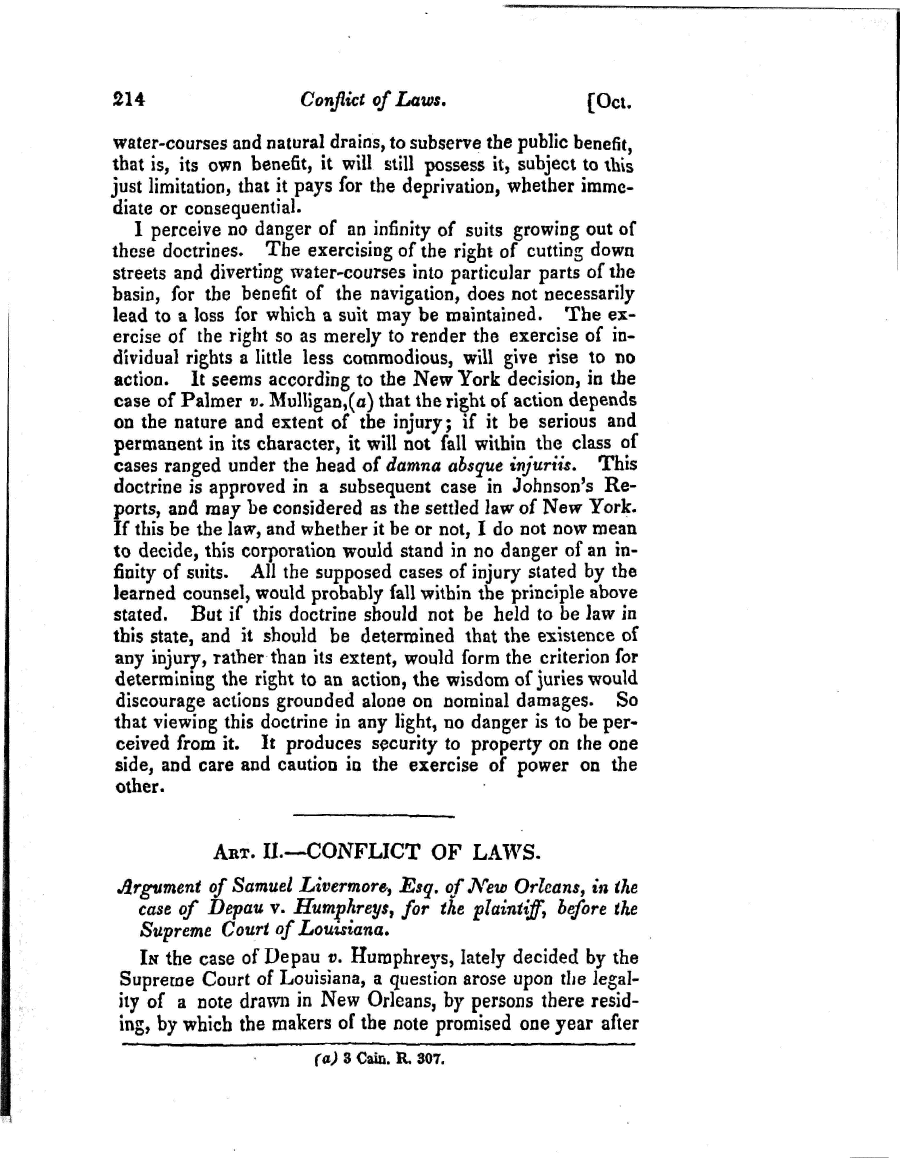|
214 Conflict of Laws. [Oct.
water-courses and natural drains, to subserve the public benefit,
that is, its own benefit, it will still possess it, subject to this
just limitation, that it pays for the deprivation, whether imme-
diate or consequential.
1 perceive no danger of an infinity of suits growing out of
these doctrines. The exercising of the right of cutting down
streets and diverting water-courses into particular parts of the
basin, for the benefit of the navigation, does not necessarily
lead to a loss for which a suit may be maintained. The ex-
ercise of the right so as merely to render the exercise of in-
dividual rights a little less commodious, will give rise to no
action. It seems according to the New York decision, in the
case of Palmer v. Mulligan,(a) that the right of action depends
on the nature and extent of the injury; if it be serious and
permanent in its character, it will not fall within the class of
cases ranged under the head of damna alsque injuriis. This
doctrine is approved in a subsequent case in Johnson's Re-
ports, and may be considered as the settled law of New York.
If this be the law, and whether it be or not, I do not now mean
to decide, this corporation would stand in no danger of an in-
finity of suits. All the supposed cases of injury stated by the
learned counsel, would probably fall within the principle above
stated. But if this doctrine should not be held to be law in
this state, and it should be determined that the existence of
any injury, rather than its extent, would form the criterion for
determining the right to an action, the wisdom of juries would
discourage actions grounded alone on nominal damages. So
that viewing this doctrine in any light, no danger is to be per-
ceived from it. It produces security to property on the one
side, and care and caution ia the exercise of power on the
other.
ART. II.óCONFLICT OF LAWS.
Argument of Samuel Livermore, Esq. of New Orleans, in the
case of Depau v. Humphreys, for the plaintiff, before the
Supreme Court of Louisiana.
IN the case of Depau t>. Humphreys, lately decided by the
Supreme Court of Louisiana, a question arose upon the legal-
ity of a note drawn in New Orleans, by persons there resid-
ing, by which the makers of the note promised one year after
(a) 3 Cain. R, 307.
|

